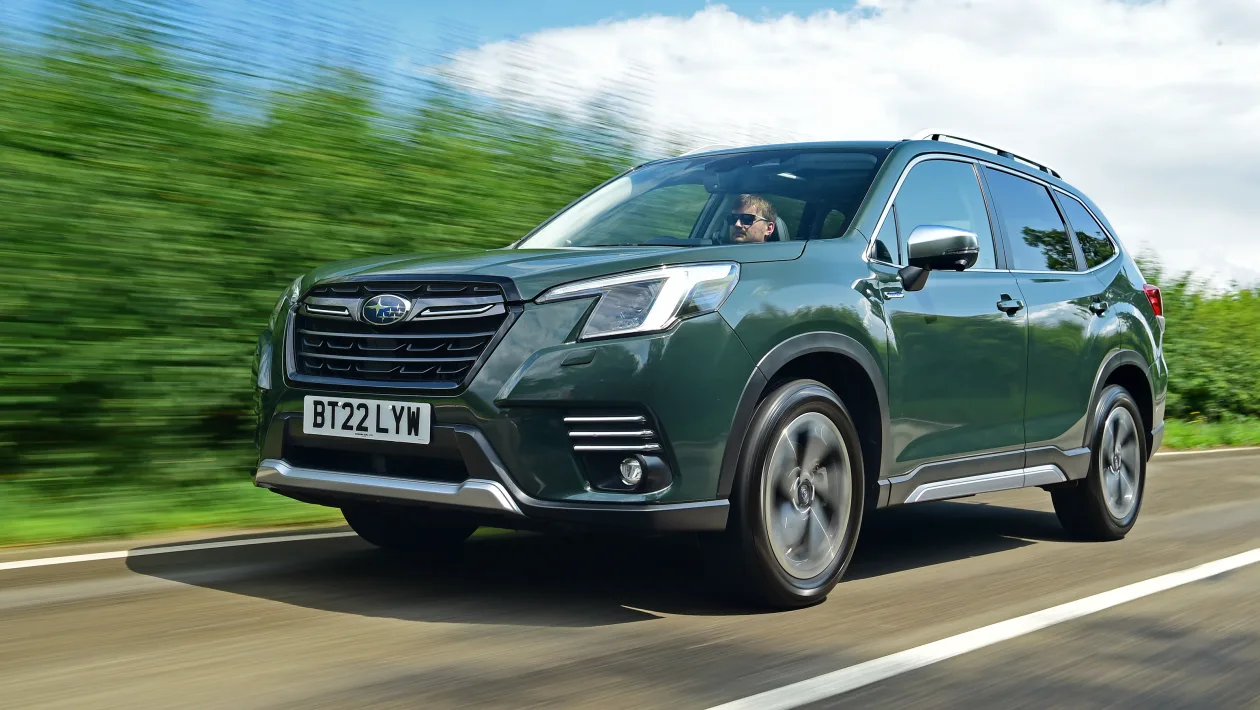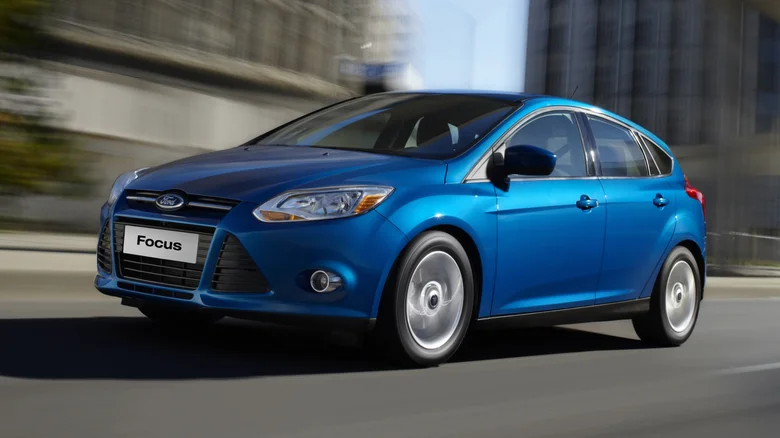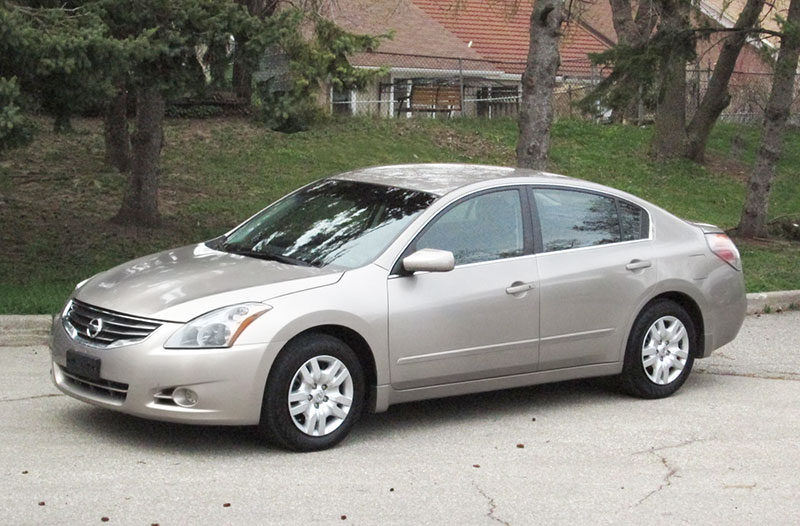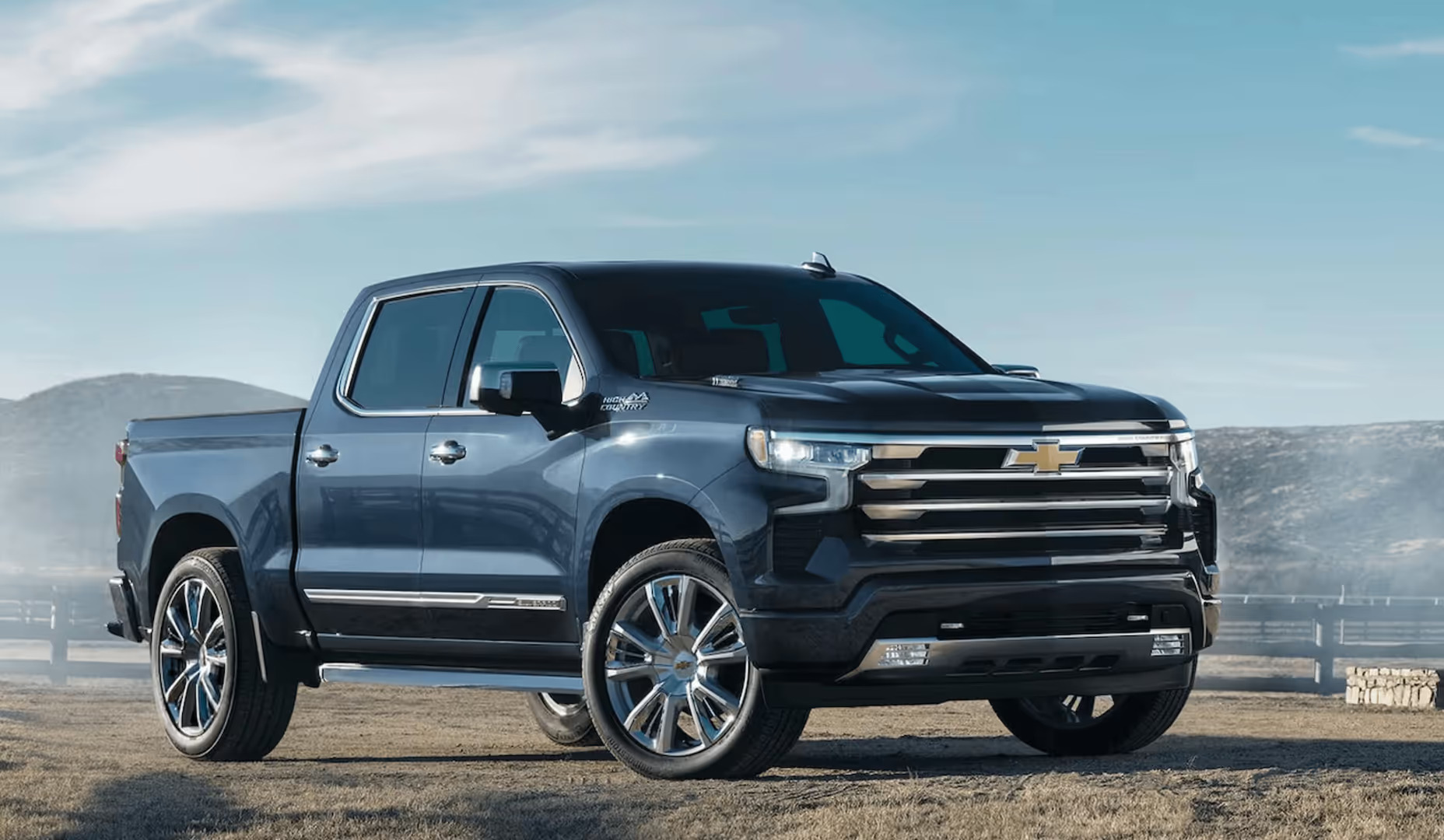In today’s used car market, vehicle history reports have become indispensable tools for buyers seeking transparency and assurance about the vehicles they intend to purchase. Among these reports, AutoCheck stands out as one of the most trusted services, providing detailed records of accidents, title branding, odometer discrepancies, and other crucial data points that influence a vehicle’s value and desirability.
For many buyers, a clean AutoCheck report signals a well-maintained vehicle free from major accidents or title issues, often an indicator of a sound investment. However, while AutoCheck reports offer valuable insights, they are not infallible. A vehicle may have a spotless history on paper but still harbor costly hidden mechanical, electrical, or structural issues that never triggered insurance claims or title changes.
Conversely, some vehicles consistently show clean reports due to responsible ownership, reliable engineering, and meticulous record-keeping, reinforcing the report’s value as a purchase tool.
Understanding the nuances behind clean and flawed AutoCheck reports is essential for used car buyers, dealers, and enthusiasts alike. This article explores two contrasting groups of vehicles: first, five models that typically exhibit consistently clean AutoCheck reports, reflecting genuine reliability and transparency; and second, five models known for harboring hidden problems that often go unreported in these histories, potentially misleading buyers who rely solely on report data.
This balanced perspective aims to help readers better navigate the complexities of used car purchasing, emphasizing why AutoCheck is just one piece of a larger puzzle.
Vehicles that commonly display clean AutoCheck reports tend to share several characteristics. They are often built on robust platforms with proven reliability, supported by extensive service networks and owner communities that emphasize proper maintenance and transparency.
These cars benefit from conservative engineering approaches, superior safety features, and design philosophies that prioritize long-term durability over cutting-edge but unproven technologies. Owners of such vehicles usually adhere to recommended maintenance schedules, repair damages promptly, and keep comprehensive service records.
Their cautious driving habits and lower incidence of serious accidents translate into clean titles and unblemished insurance histories, which AutoCheck accurately captures. Examples include midsize sedans and SUVs from manufacturers like Toyota, Honda, Subaru, Lexus, and Chevrolet, whose reputation for reliability is well-earned and documented.
On the other hand, certain vehicles are notorious for hiding issues that do not show up in standard history reports. These problems range from persistent transmission failures and electrical gremlins to emissions-related repairs and engine component breakdowns.
Many of these repairs are conducted out-of-pocket or at independent shops that do not report to insurance or national databases, meaning they don’t appear in AutoCheck records. Some owners may neglect or delay repairs, while others might address issues under warranty without creating insurance claims. Moreover, certain design flaws or recalls may result in repeated repairs that are well-documented locally but invisible on a history report.
The discrepancy between reported histories and actual condition creates risks for buyers, who may unknowingly acquire vehicles with expensive, undisclosed problems. Vehicles like early 2010s Jeep Grand Cherokees, Ford Focus models with known transmission defects, Volkswagen Jettas entangled in emissions scandals, and certain Chevrolet and Nissan models exemplify these hidden dangers.
In navigating the used car landscape, AutoCheck reports remain invaluable for preliminary screening and verification, but they should never be the sole factor guiding purchasing decisions. Buyers must complement these reports with thorough mechanical inspections, independent diagnostics, and careful review of service and repair documentation.
Understanding the common pitfalls and strengths of specific models further equips buyers to interpret the significance of a clean or flawed report. Through this dual examination of vehicles with clean AutoCheck records and those prone to hidden issues, this article aims to enhance consumer knowledge and promote safer, more informed vehicle purchases.
Whether you are a first-time buyer or an experienced collector, knowing the limits and strengths of vehicle history reporting can save you time, money, and frustration in the long run.
Also Read: 5 Car Key Systems That Rarely Fail And 5 That Leave You Stranded
5 Cars With Clean AutoCheck Reports

1. Toyota Camry
The Toyota Camry has earned a legendary reputation in the automotive world for being one of the most reliable and well-maintained vehicles on the market, which directly contributes to its consistently clean AutoCheck reports. This midsize sedan appeals to a broad demographic—from daily commuters to families—largely because of its predictable and trouble-free performance.
Toyota’s commitment to quality engineering and conservative design choices means that Camrys seldom experience catastrophic failures or complex mechanical issues that lead to accidents or insurance claims. Owners tend to be diligent about maintenance, understanding that routine servicing goes a long way in preserving the car’s condition and value over time.
This proactive care is reflected in the AutoCheck database as a lack of major damage claims, salvage titles, or inconsistent odometer readings, resulting in reports that exude transparency and reliability.
The Toyota Camry’s clean records also stem from its safety features and solid build quality, which help prevent serious accidents. The vehicle’s robust construction and advanced safety technologies—such as multiple airbags, stability control, and collision avoidance systems—significantly reduce the risk and severity of collisions.
Consequently, when these cars do get involved in accidents, they tend to be minor fender benders that rarely impact the vehicle’s title or result in prolonged downtime. These minor incidents are often handled through direct repairs without insurance claims, which means they don’t clutter the AutoCheck reports with red flags.
Additionally, because the Camry is a popular choice for rideshare drivers and fleet services, many owners maintain the vehicle meticulously to meet usage demands, further enhancing its clean history.
Beyond maintenance and safety, the Toyota Camry benefits from Toyota’s extensive dealer and service network, which ensures proper documentation of all repairs and inspections. This transparency extends to used car transactions, where full service histories accompany the vehicle, providing buyers with peace of mind.
The high resale value of the Camry incentivizes owners to avoid shortcuts or concealing damage, further contributing to the prevalence of clean AutoCheck reports. Overall, the Camry’s combination of engineering integrity, owner responsibility, and detailed service records makes it a standout when searching for vehicles with trustworthy histories and minimal hidden issues.

2. Honda CR-V
The Honda CR-V is another vehicle that consistently features clean AutoCheck reports, thanks to its strong reputation for reliability, owner satisfaction, and well-documented maintenance history. As a compact SUV, the CR-V strikes a perfect balance between practicality and durability, making it a popular choice among families and individuals seeking a dependable daily driver with ample cargo space.
Honda’s precision engineering and commitment to continuous improvement mean that the CR-V rarely suffers from widespread defects or recalls that would mar its vehicle history. Owners are typically proactive in servicing their CR-Vs, knowing that timely oil changes, brake inspections, and tire rotations not only improve safety but also protect resale value.
One key reason the Honda CR-V’s AutoCheck reports remain clean is the vehicle’s relatively low incidence of severe accidents and structural damage. Its solid crash-test ratings and stable handling reduce the likelihood of rollovers and major collisions, which can lead to salvage titles or branded histories.
Additionally, the CR-V’s value retention encourages buyers and sellers alike to maintain transparency about its condition. Owners who invest in keeping their vehicles roadworthy often use authorized service centers that report repairs and maintenance to centralized databases, which reflect positively on the AutoCheck report. The visibility into the vehicle’s upkeep ensures that potential buyers are less likely to encounter hidden problems after purchase.
Another factor supporting clean AutoCheck histories for the CR-V is Honda’s widespread availability and affordability of replacement parts. When repairs are necessary, they tend to be straightforward and done correctly, minimizing the chance of poorly executed fixes that could lead to further issues.
This strong support network also encourages owners to address minor damages promptly, preventing small problems from escalating. The CR-V community, including forums and owner clubs, further reinforces responsible ownership by sharing maintenance tips and alerts about recalls. Collectively, these factors create an environment where the Honda CR-V emerges as a vehicle with clear, well-maintained histories that instill confidence in buyers relying on AutoCheck data.

3. Subaru Forester
The Subaru Forester enjoys a devoted following, especially in regions prone to harsh weather conditions, where its all-wheel-drive system and rugged design shine. This SUV’s reputation for dependability and resilience translates into many vehicles boasting clean AutoCheck reports.
Forester owners often use their vehicles for outdoor adventures and daily commuting, demanding reliability in diverse driving scenarios. As a result, these owners tend to be diligent about servicing their vehicles, ensuring issues are addressed before escalating into costly repairs or accidents. This proactive approach keeps the Forester’s insurance claims low and prevents title branding due to damage, which is reflected in the generally clean AutoCheck reports.
Subaru’s engineering philosophy emphasizes longevity and simplicity, which helps reduce the likelihood of catastrophic mechanical failures or complex electronic malfunctions. While early Forester models had some known issues, such as head gasket failures, Subaru has since improved these areas, and many of these repairs are recorded in service histories rather than insurance claims.
The consistent application of recalls and service bulletins also ensures that affected vehicles are brought up to standard promptly. These repair records are often documented in the same databases feeding into AutoCheck, resulting in reports that accurately reflect vehicle care without concealing problems.
Furthermore, Subaru owners tend to be highly engaged with their vehicles, often participating in brand communities that share best practices for maintenance and troubleshooting. This cultural aspect contributes to responsible ownership, minimizing neglect, and encouraging full transparency during resale.
Dealers specializing in Subaru vehicles also emphasize accurate reporting to protect brand reputation, which leads to clean, reliable AutoCheck reports. For buyers seeking a versatile, safe, and well-documented SUV, the Subaru Forester is an exemplary choice backed by clear and trustworthy vehicle histories.

4. Lexus RX
As Toyota’s luxury arm, Lexus combines premium comfort with legendary reliability, resulting in models like the RX that frequently showcase spotless AutoCheck reports. The RX appeals to buyers seeking a refined driving experience without sacrificing long-term durability.
Lexus owners typically expect—and receive—exceptional build quality, which reduces the incidence of serious mechanical or electrical failures that might trigger insurance claims or salvage branding. This expectation, coupled with Lexus’s rigorous quality control standards, fosters ownership habits focused on consistent maintenance and transparent record-keeping.
Lexus dealerships contribute significantly to the clean AutoCheck history of RX models. Their comprehensive service protocols and meticulous documentation create a paper trail that provides full visibility into the vehicle’s condition. Luxury buyers also tend to be more conscientious about vehicle care, ensuring timely repairs and preserving factory warranties where possible.
These factors contribute to a reduced risk of unreported damage or questionable repairs that can plague used vehicles. The RX’s conservative styling and engineering also mean fewer recalls or unforeseen defects that would complicate ownership history.
Moreover, the Lexus RX benefits from a strong resale market where buyers are willing to pay a premium for vehicles with verified clean histories. This financial incentive encourages sellers to fully disclose the vehicle’s condition and maintain clean titles.
The RX’s reputation for quality and reliability is so well established that it often commands higher resale values than many competitors, making it a vehicle that owners take pride in preserving. For prospective buyers, this translates to greater confidence in AutoCheck reports and a lower risk of hidden issues that could undermine their investment.

5. Chevrolet Silverado 1500 (Recent Models)
The Chevrolet Silverado 1500 is a cornerstone of the full-size pickup truck market, known for its ruggedness, capability, and, importantly, well-documented vehicle histories in recent model years. Silverado owners frequently rely on their trucks for work and daily driving, which encourages regular maintenance and prompt repairs.
This responsible ownership pattern reduces the likelihood of hidden damage or unreported accidents, helping ensure that AutoCheck reports reflect accurate and comprehensive vehicle histories.
GM’s extensive dealer network plays a key role in maintaining clean AutoCheck records for the Silverado. Service centers are diligent in recording repairs, warranty work, and inspections, creating a thorough documentation trail. This transparency benefits buyers and sellers alike, as it reduces disputes and surprises during resale.
Moreover, Silverado’s engineering emphasizes durability, meaning that many trucks avoid major mechanical failures that might necessitate insurance claims or title branding. When accidents do occur, the trucks’ robust construction and safety features often limit damage severity, keeping the vehicle’s history clean.
The Silverado’s popularity also creates a competitive resale market where buyers scrutinize vehicle histories carefully. Sellers are therefore motivated to ensure accurate reporting and full disclosure, which translates to fewer cases of hidden issues. With strong resale values and dependable engineering, the Silverado 1500 remains a trusted choice for buyers who prioritize transparent histories and long-term ownership satisfaction.
5 Cars With Hidden Issues
1. Jeep Grand Cherokee (Early 2010s Models)
The Jeep Grand Cherokee of the early 2010s is a classic example of a vehicle with hidden issues that often fly under the radar of vehicle history reports like AutoCheck.
While these SUVs are praised for their off-road capabilities and luxurious interiors, many owners have reported persistent mechanical problems that don’t always lead to documented insurance claims or title brands. One of the most notorious issues is the failure of the eight-speed automatic transmission, which can cause harsh shifting, hesitation, or complete transmission failure.
Because transmission problems develop gradually and sometimes intermittently, owners might initially attempt DIY fixes or take the vehicle to independent mechanics who do not report the repairs to official databases, leaving these issues invisible in AutoCheck.
Additionally, the Grand Cherokee’s complex electronic systems, such as air suspension and various driver assistance technologies, have been known to malfunction. These failures can lead to costly repairs and compromised drivability, yet they rarely appear in vehicle history reports unless they cause accidents or insurance claims.
Since the Grand Cherokee is often used in rugged conditions, it is prone to off-road damage or wear that isn’t officially reported. This makes it possible for buyers to see a seemingly clean AutoCheck report while the vehicle is hiding extensive mechanical and cosmetic issues.
The combination of high repair costs, inconsistent documentation, and usage in harsh environments means the Grand Cherokee requires thorough mechanical inspection beyond just relying on vehicle history data.
Moreover, many owners report electrical gremlins affecting everything from dashboard displays to climate control systems. These kinds of issues don’t typically lead to insurance claims or salvage titles, but can significantly impact ownership experience and vehicle reliability.
Some repairs, especially those conducted outside the dealership network, remain undocumented and thus don’t show up on reports. For buyers unaware of these common problems, purchasing a Jeep Grand Cherokee with a clean AutoCheck report can be misleading, making it essential to seek expert mechanical assessments and detailed service records.

2. Ford Focus (2012–2016 Models)
The Ford Focus produced between 2012 and 2016 is infamous for hidden issues related primarily to its Powershift dual-clutch transmission, which has been the subject of widespread consumer complaints and litigation. Despite numerous problems reported by owners, including shuddering, slipping, and premature failure, these issues often do not appear in AutoCheck or similar vehicle history reports.
This is because transmission failures typically don’t trigger insurance claims or title changes unless they lead to accidents. Most owners handle repairs privately, either through warranty coverage, dealership fixes, or independent shops, leaving no official record in vehicle history databases.
Beyond transmission woes, the Ford Focus of this era is also known for intermittent electrical problems, such as faulty door locks, failing sensors, and issues with the infotainment system. Like the transmission issues, these electronic problems often do not cause accidents or lead to insurance claims, so they remain hidden from standard vehicle history checks.
This disconnect creates a significant risk for buyers who may see a clean report but encounter expensive repairs soon after purchase. The Ford Focus’s problems have led to decreased resale values, but buyers still attracted by its affordability may find themselves trapped with costly, undocumented defects.
The combination of a faulty transmission system and electrical gremlins makes the Focus a car where thorough pre-purchase inspections and careful review of maintenance history are crucial. AutoCheck reports, while useful, don’t tell the full story here. Prospective buyers should demand detailed service records, warranty repair documentation, and possibly even third-party mechanical assessments to avoid falling victim to hidden issues that can erode the vehicle’s reliability and value.

3. Volkswagen Jetta (Early 2010s)
Volkswagen Jettas from the early 2010s, particularly diesel models equipped with the TDI engine, present a significant challenge for buyers relying on vehicle history reports like AutoCheck. These cars were at the heart of the “Dieselgate” emissions scandal, which involved software manipulation to pass emissions tests.
While the scandal itself doesn’t necessarily reflect damage or accident history, it has complicated the vehicle’s resale market and repair landscape. Many affected Jettas have experienced unreported emissions-related repairs and engine recalibrations that aren’t visible in AutoCheck reports.
Besides emissions problems, early 2010s Jettas are known for persistent mechanical and electrical issues, including failing diesel particulate filters (DPFs), turbocharger problems, and electrical sensor malfunctions. Since these problems often result in warranty repairs or out-of-pocket fixes, they may never trigger insurance claims or title changes.
This lack of formal documentation means many Jettas may appear clean on paper while masking a history of costly, recurrent problems. The diesel models’ complexity and the impact of regulatory fallout mean the Jetta’s true condition can be much worse than a simple vehicle history report suggests.
Additionally, some Jetta owners have experienced fluctuating oil consumption and transmission difficulties, particularly in the manual transmission variants. These issues can affect drivability and longevity, but again are rarely reflected in official vehicle histories.
For buyers, this situation underscores the importance of requesting detailed service records and comprehensive inspections before purchasing an early-2010s Volkswagen Jetta. Relying solely on AutoCheck data can be risky, given the many hidden maintenance and emissions-related problems associated with these vehicles.

4. Chevrolet Equinox (First Generation)
The first-generation Chevrolet Equinox, produced primarily in the mid-2000s, is notorious for hidden mechanical issues that may not be immediately evident through vehicle history reports. One of the most significant problems with these models is the frequent failure of the head gasket and timing chain components, which can lead to catastrophic engine damage if untreated.
These repairs are often expensive and may be handled privately by owners or independent mechanics without insurance involvement, meaning that AutoCheck and similar reports might show clean histories despite serious mechanical flaws.
In addition to engine troubles, the early Equinox suffers from transmission reliability issues, including slipping, harsh shifting, and premature wear. Electrical system faults—ranging from malfunctioning sensors to erratic dashboard behavior—are also commonly reported by owners. These problems rarely cause accidents or title branding, so they don’t appear in vehicle history data, leaving buyers unaware of the risks hidden beneath a clean report.
The lack of visible claims or salvage titles, combined with a solid exterior appearance, can mislead buyers into assuming the vehicle is mechanically sound. However, the first-generation Equinox’s tendency to require major engine and transmission repairs often results in high ownership costs and decreased reliability.
This reality highlights the limits of relying solely on AutoCheck when evaluating older SUVs, making comprehensive mechanical inspections and thorough maintenance record reviews essential steps in the buying process.

5. Nissan Altima (2007–2012 Models)
The Nissan Altima from model years 2007 to 2012 is another vehicle that commonly hides significant issues that won’t show up in typical vehicle history reports. A major source of trouble is the CVT (continuously variable transmission) found in many of these models, which has a high failure rate and often requires replacement or costly repairs.
Since many CVT problems are handled through warranty repairs or independent shops, they don’t always appear in insurance or salvage databases. As a result, an Altima can have a clean AutoCheck report while harboring transmission problems that greatly affect drivability and value.
In addition to transmission challenges, these Altimas are known for premature engine wear, especially involving the valve timing components and oil consumption issues. Electrical problems, such as failing power windows and faulty sensor,s are also commonly reported, yet these faults rarely lead to accident claims or title changes. This means buyers might be unaware of the full extent of the vehicle’s mechanical shortcomings when relying on a vehicle history report alone.
The combination of high transmission failure rates and other mechanical gremlins means that Nissan Altimas from this era demand detailed scrutiny before purchase. Buyers should seek thorough inspections and review maintenance records to uncover problems that are not documented in AutoCheck. The risks of hidden defects in these models serve as a cautionary tale about the limitations of vehicle history reports and the importance of holistic due diligence in used car buying.
Also Read: 5 Gearboxes That Feel New At 150K And 5 That Grind After 50K
The landscape of used car purchasing is riddled with complexities that go beyond a simple yes or no based on a single report. AutoCheck reports offer an essential layer of protection and insight by consolidating crucial vehicle history data such as accidents, title issues, and odometer anomalies. However, this information is inherently limited by the nature of what is reported and recorded.
This article has highlighted the critical distinction between vehicles whose clean AutoCheck reports genuinely reflect their condition and those that carry hidden mechanical or electrical issues invisible to such reports. Understanding these distinctions is paramount to making prudent decisions in a market where appearances can be deceiving.
For vehicles like the Toyota Camry, Honda CR-V, Subaru Forester, Lexus RX, and recent Chevrolet Silverado 1500 models, clean AutoCheck reports usually indicate a trustworthy vehicle with a lower risk of costly surprises. These models benefit from a strong track record of reliability, owner diligence, and comprehensive dealer and service network documentation.
They tend to be engineered with durability and safety in mind, which results in fewer severe accidents and less opportunity for hidden damage. Owners of these vehicles often maintain detailed records and prioritize repairs, contributing to the transparent vehicle histories that AutoCheck captures. Consequently, buyers can have a higher degree of confidence in purchasing these models when the reports are clean, although mechanical inspections remain advisable.
In contrast, vehicles such as the early 2010s Jeep Grand Cherokee, Ford Focus (2012–2016), Volkswagen Jetta from the dieselgate era, first-generation Chevrolet Equinox, and Nissan Altima (2007–2012) demonstrate how hidden issues can complicate the buying process.
Transmission failures, emissions-related repairs, electrical system malfunctions, and engine component breakdowns often go unreported to insurance companies or national vehicle history databases, escaping the scope of AutoCheck. Owners may repair issues privately or under warranty, leaving no formal claims or title brands behind. This situation presents significant risks for buyers who rely solely on these reports for reassurance.
Such hidden problems can lead to expensive repairs and unexpected downtime, eroding the vehicle’s value and reliability. It underscores the need for buyers to dig deeper—reviewing service records, securing professional inspections, and seeking seller transparency.
This dual reality illustrates that while AutoCheck reports are powerful tools, they are not infallible gatekeepers of vehicle integrity. They should be considered one of many sources of information in a holistic due diligence process. Prospective buyers must supplement report data with thorough mechanical evaluations and possibly even seek out expert advice from trusted mechanics or third-party inspection services.
Doing so can reveal potential red flags masked by clean histories or confirm the sound condition suggested by a spotless report. Furthermore, understanding model-specific tendencies toward hidden issues or reliability can guide buyers toward smarter choices tailored to their risk tolerance and budget.
In the evolving used car market, where private sellers, dealerships, and online platforms provide vast options, consumers must navigate with vigilance and discernment. A clean AutoCheck report can be an excellent starting point, but it is not an endpoint.
This article’s examination of both ends of the spectrum—vehicles with genuinely clean histories and those prone to hidden problems—equips buyers with critical knowledge to avoid pitfalls and protect their investments. Ultimately, a combination of trustworthy data, comprehensive inspections, and informed awareness of model-specific issues provides the best chance for a satisfying and financially sound vehicle purchase.
By embracing this multi-faceted approach, buyers can confidently navigate the complex used car landscape. They can minimize the risk of costly surprises, maximize the longevity and enjoyment of their vehicles, and make decisions grounded in a full understanding of what lies beneath the surface of any given AutoCheck report.
This deeper knowledge transforms a mere data point into actionable insight, empowering buyers to drive away with peace of mind and the reassurance that their next vehicle is a wise and well-informed investment.

